
This post may contain affiliate links. Read our disclosure policy.
Ovens: they’re such a crucial part of the baking process, but we don’t necessarily give them much thought.
That preheat ‘beep’ goes off and we throw in our cookies, brownies, or cake, set the timer, and walk away, right?
Well … not necessarily.
Unfortunately, most home ovens aren’t quite that simple and aren’t as reliable as we believe.
I get so many questions asking, “what went wrong?” when HTH readers try a recipe and it doesn’t turn out right. So many people think the recipe or their ingredients are to blame – and while that can be the case, oftentimes, it’s your oven’s fault your cookies turned out too flat, too crispy or burned.
Below, I’m using cookies to illustrate why becoming a little more familiar with your oven will help your baking more than you might think!
What You NEED to Know About Your Oven
Learn the three most important things to know about your oven and how to adjust, to be successful whenever you bake something in the oven.
1. Oven 101: Temperature
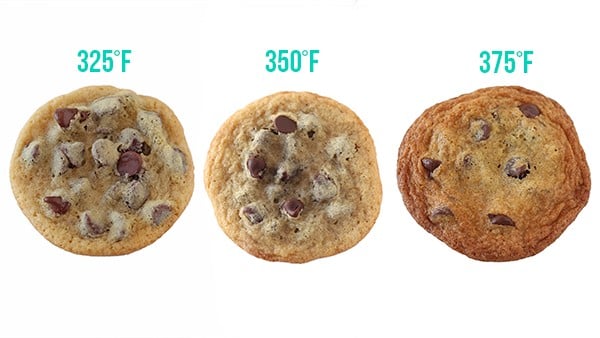
- The #1 fact to know about your oven: it’s lying to you about the temperature it’s really at.
- Many home ovens are off by 15°F, some by even 25°F or more!
- I’ve never had a home oven be 100% accurate.
- In fact, my new oven often tells me it’s preheated to the temperature I specified, when it’s actually 20°F cooler.
- It may not seem like a big difference, but baking at the wrong temperature can significantly alter your final product.
- In the image above, you can see what your cookies should look like if they’re baked at the correct temperature of 350°F, vs. how they’ll turn out if they’re baked at 25°F too cool or 25°F too warm.
- Too cool, and your cookies can overspread and not brown enough.
- Too warm, and your cookies may not spread enough, brown too much, and burn on the bottom.
- An oven thermometer is a necessity to make sure your oven is heating correctly.
- If your oven is not at the right temperature, you can adjust accordingly until your oven thermometer confirms it’s correct.
2. Oven 101: Placement

- The position of your oven rack can also have a surprising impact on your cookies.
- Certain recipes will specifically tell you where to position your oven rack, but most of the time it should be in the middle. Why? This is where the heat will be most even.
- If you bake your cookies (or anything) on the top rack, there won’t be as much browning.
- On the bottom rack, there will likely be too much browning.
- The same effect can occur when you’re baking multiple dishes at once. The other baking pans can block the heat from moving around freely and change the way the product is baked and browned.
- When possible, try to bake off one batch at a time instead of baking multiple pans at a time.
3. Oven 101: Conventional vs. Convection
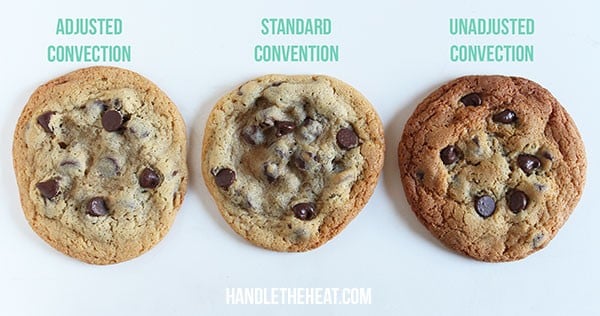
- Unlike a conventional oven, which is the standard here in the U.S., a convection oven has a fan inside and an exhaust system that helps to circulate the hot air.
- This allows the oven to heat more quickly and evenly, and to bake more quickly and evenly.
- It’s more energy efficient and can even lead to better browning since the blowing air creates a drier environment.
- In many ovens, it also bakes so much more evenly, so you don’t need to rotate your baking trays.
When to Use Convection (if your oven has both convection + conventional settings)
- Convection is great for savory preparations like roasts or anything that is covered, like a braise or casserole.
- It can be good for cookies, pies, and pastries IF you make the proper adjustments (below).
- It’s NOT good for delicate foods like custards, soufflés, cakes, or quick breads.
How to Adjust
- If you’re using the convection (fan) setting in a recipe that doesn’t specifically call for it, be sure to drop the temperature 25°F.
- Also begin to check for doneness earlier, at least 2/3 or 3/4 of the way through the recommended baking time.
- Note that some convection ovens will automatically adjust the temperature when switching on the fan.
- Consult your oven manual if you’re unsure about yours.
More Baking Science Articles
About Tessa...
I share trusted baking recipes your friends will LOVE alongside insights into the science of sweets. I'm a professionally trained chef, cookbook author, and cookie queen. I love to write about all things sweet, carb-y, and homemade. I live in Phoenix, Arizona (hence the blog name!)
Leave a Comment & Rating
Add a Review or Question
© Handle the Heat - handletheheat.com
Join the Handle the Heat Community
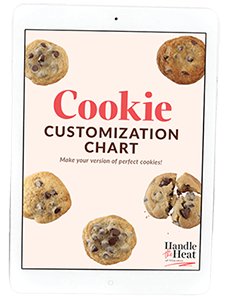
Instead of digging through cookbooks and magazines and searching the internet for amazing recipes, subscribe to Handle the Heat to receive new recipe posts delivered straight to your email inbox. You’ll get all the latest recipes, videos, kitchen tips and tricks AND my *free* Cookie Customization Guide (because I am the Cookie Queen)!

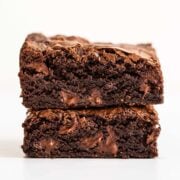


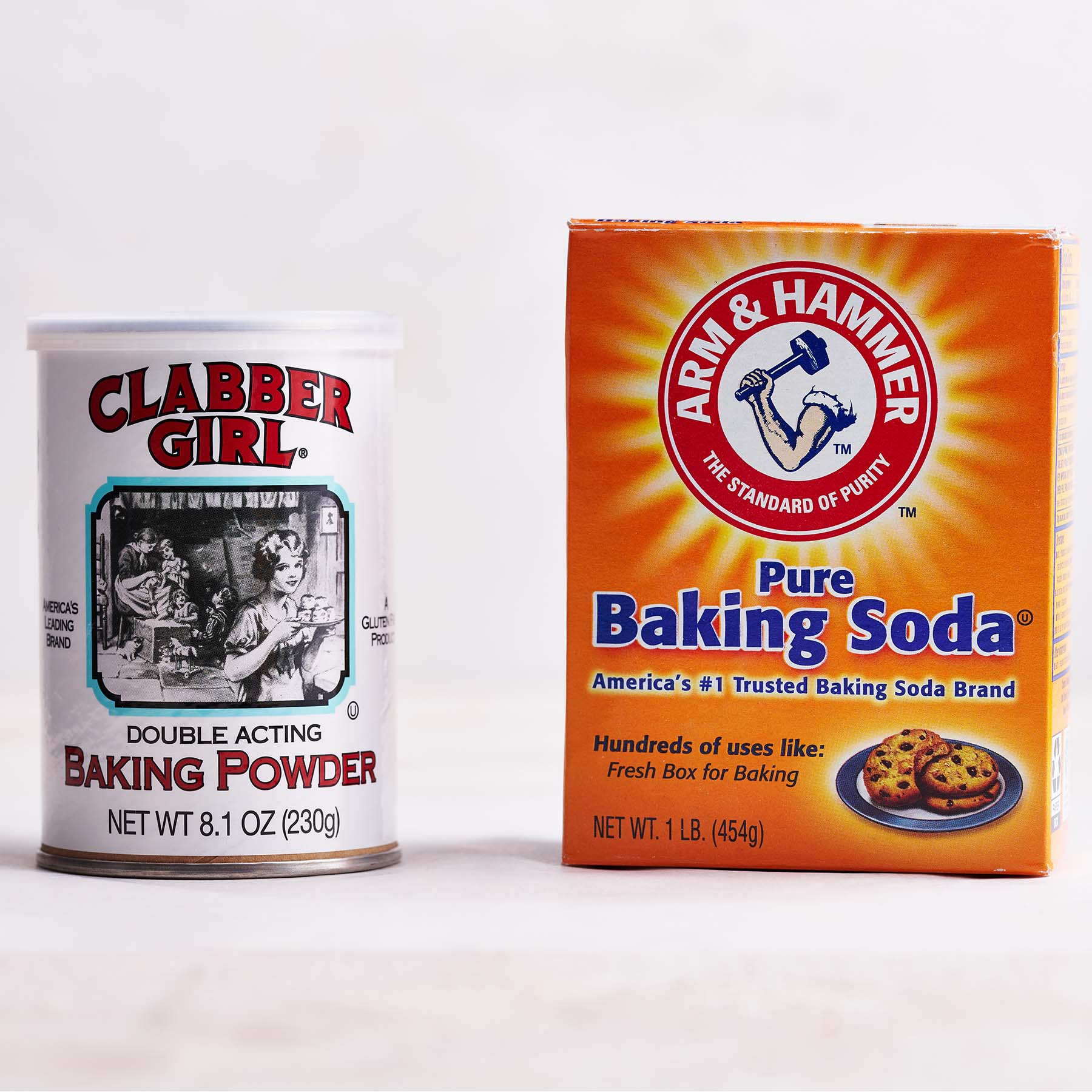

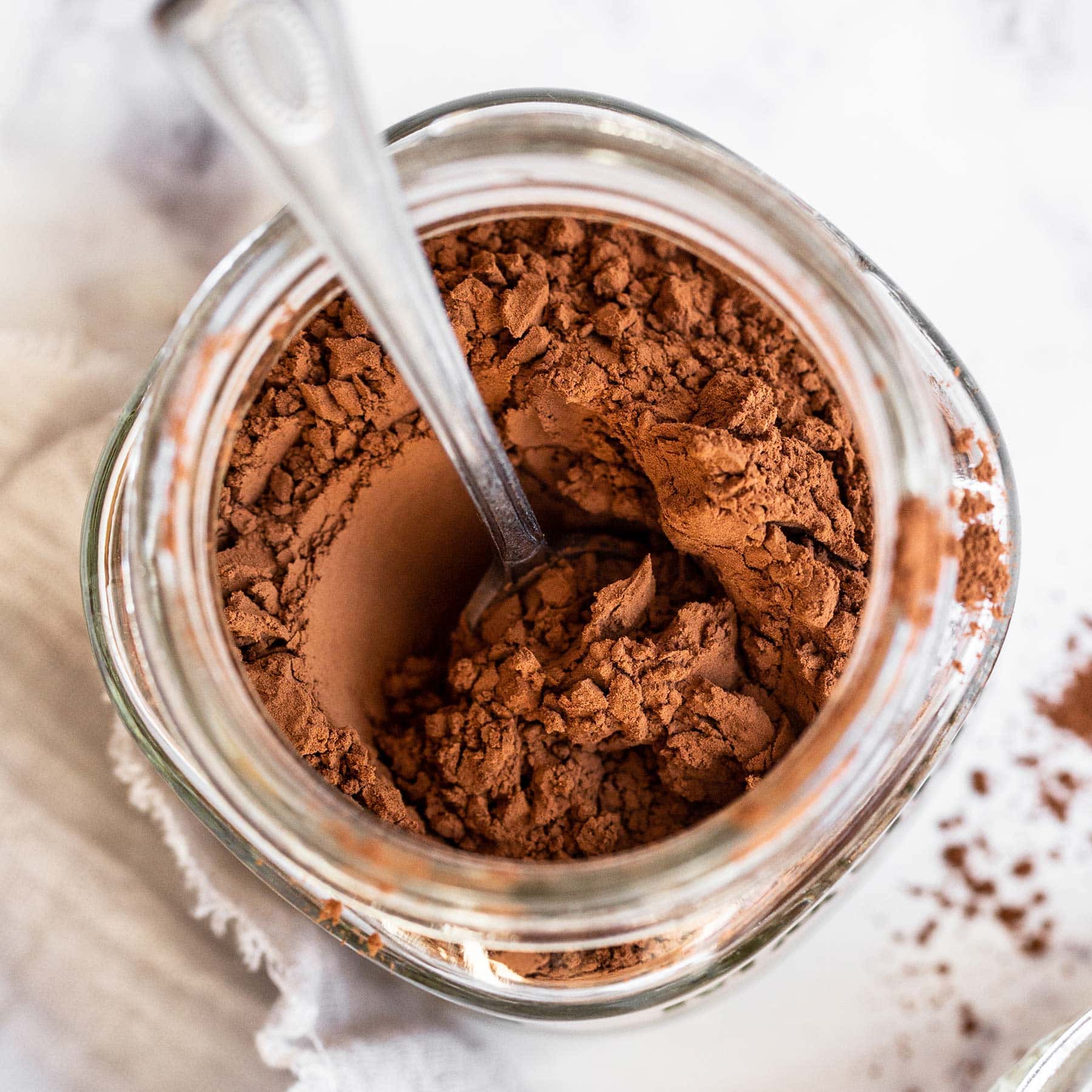
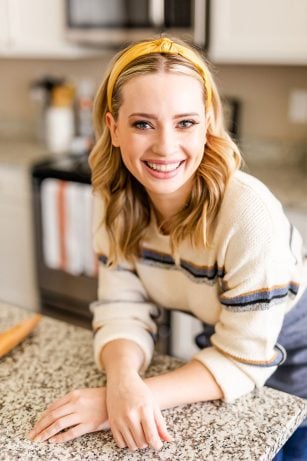


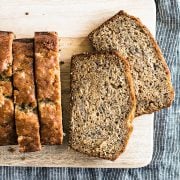
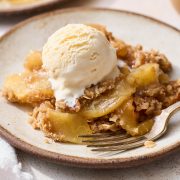
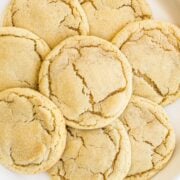
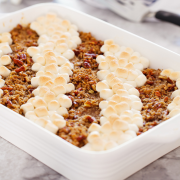

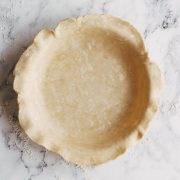
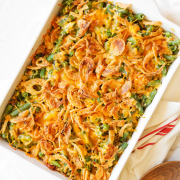
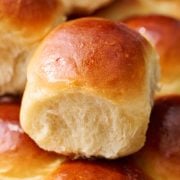
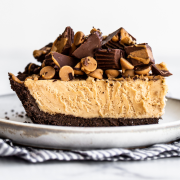

What brand of flour do you use?
Hi Chrisann! Tessa loves Gold Medal bleached flour, and we typically use that or King Arthur all-purpose flour to test our recipes 🙂
my oven has a fan. but it has 2 options. 1 says bake which is regular. and the 2nd option says bake but has has a fan picture on it. which one is better or is is good to use to bake cookies? should I use the fan bake option or regular bake? for cookies.
Hi Angel Marie! It depends on your oven, but if that icon means convection, then check out all the info above in this post for how to adjust your temperatures and bake cookies in a convection setting 🙂
well I’m not sure if its a convection oven. it has a fan picture with the word bake. which is why I’m asking.
Hi again! Unfortunately there is no way for me to know that! I would try Googling the make and model of your oven and see what you can find about it online 🙂
I want to ask when baking, like cakes in and electric oven with a fan do I use top and bottom heat + fan or only bottom heat + fan.
I want to know because I fond the some ovens doesn’t have the option of bottom + fan so I wanted to know can I bake in it or not
Hi Ahmed, I don’t recommend using a convection setting for delicate foods like cakes as the oven will make it develop an a-symmetrical shape due to the windy environment! I personally recommend using the fan to preheat your oven quicker but then turning the fan off and baking as directed. Good luck!
Thanks for this video. My new oven has an automatic temperature adjustment when using the convection mode. Hence, do I still check the oven temperature with an oven thermometer? I am thinking yes??? If the temperature is not accurate , would I then make the necessary adjustment (i.e. recipe calls for 350 using regular oven – so I assume the temperature should be 325 using convection oven).
Also, if the air is dryer when using the convection mode, would cookies not come out drier? I bake a lot of sugar cookies.
Thanks, Chris
Yes, I’d recommend getting an oven thermometer to be sure. Once you know the difference in your oven temp, you are correct — you can then make the necessary adjustments 🙂 Good luck!
Hi Tessa,
Thank you so much for this! I had a question about your brownie recipes – do you recommend the fan setting on or off for brownies?
And if we keep the fan setting off, can we keep the temp the same or do we still need to adjust it to the lower temperature?
Thank you!!!
You could use the fan setting for brownies as they’re made with a “heavier” dough and wouldn’t develop an a-symmetrical shape due to the windy environment. You would need to drop the temperature by 25 degrees and check for doneness 2/3 or 3/4 of the way through the recommended baking time. OR you could always just use the fan only to heat your oven, turn it off, and then bake with the recipe directions. Good luck!
Hi Tessa! In my OTG I can put both the rods on with fan or without fan and single rod on either top or bottom without fan. Which mode should I use to bake perfect cookies and cakes?
In my OTG there i can put both the rods on with fan without fan and single rod either top or bottom without fan. Which mode should I use to bake perfect cookies and cakes?
Hi Tessa. If i rely on the oven thermometer inside to check the temperature using the fan – like if a recipe calls for a 350F and my thermometer is at 350 fan mode, do I still need to drop the temperature and check for a faster cooking time? Also, does it dry out cookies and buns?
Thanks.
I tested the settings again.
set at 350, reg reads 345, conv reads 355
Set at 375, reg reads 355, conv reads 375
Set at 400, reg reads 380, conv reads 400
I had a service check it earlier this year and they said it was ok. Of course I wasn’t there and don’t know if they tested it at regular and convection settings.
This may sound strange, but when I use an oven thermometer to check how accurate the set oven temp is, where should it be placed. In a regular oven setting, I put it in the middle. In the convection setting, shouldn’t the readout be the same, regardless of where you are placing the thermometer? (top, middle or lower lack)
Yes! Are you getting a different reading when the convection setting is on?
I have a question that never seems to be addressed at any baking/cooking website. I have double electric wall ovens. conventional & convection. (lol, I’ve never heard of gas wall ovens) When you say “rack placement”, I am assuming that the electric heating element is on the top of the oven. My heating element is on the bottom. I.like another commenter, haven’t used the convection part for baking cookies. Meats, yes.
I will be trying it though.
So, wouldn’t the placement of the heating element make a big difference? I start baking in October for Christmas & usually make 12 different types of cookies. Of course, once I got the double wall ovens, my baking time was cut in half! My baking could really start later because of that, but I can’t wait to get started! lol
So glad I found you!
Hi, Clara! Every oven I’ve used has the main heating element on the bottom. The top is reserved for broiling. You might want to consult your oven’s manual or contact the manufacturer for their recommendations.
Great news. I will start using unsalted butter from now on. Thank you.
I love learning the science of baking. always trying to figure out how I can chan something, make it better. I have a quick question about cake making. When I add my liquids and flour, I tend to do it by hand because I’m so afraid of the gluten developing, making it a tough, dense mess. What I’ve been having happen lately is that I get a moist cake, that’s so tender and light it falls apart, no structure. Could it be because I’m actually undermixing? That I’m not letting enough gluten develop? I was also thinking of adding an extra egg yolk for structure. What are your thoughts? I really like the moistness of the cake and the flavors are there, it just falls apart so easily.
Thank you,
Erika
Wow! Oven 101 made my day. It’s a great start for us beginners. It will save me a lot of hassle and heartache down the road. Keep up the greater work.
Wow! Oven 101 has made my day. It’s a great starting place for us beginners. It will save me a lot of hassle and heartache down the road. Keep up the great work.
Thanks for a very informative video. I am also struggling with the concept of Convention Versus Convection but have found, as you indicate, that convection requires less heat and less time. Our oven also has what is termed a Thermofan setting and recommends that for this setting you use solid trays versus racks in the oven. It also states that it is not necessary to pre-heat the oven. I have not used this method yet and wonder if you or your readers may have any experience with such? We live in South Africa. Kind regards, Ian.
Thanks Tessa for a great informative video about oven baking. One thing I would like to add is baking cookies on an airbake cookie sheet. Once I started using one of these sheets, my cookies came out better than ever before.
Useful tips!
Dear Tessa,
Since you have followers from countries that dont use Farhenait but Celsius, for the temperature, I would appreciate if you gave us the temp. in Celsius. Of course I can search in the internet but again you are the expert. Thanks in advance!
Pretty sure you mean “conventional” oven, not “convention”! Thanks for all the science 😉
Hi Tessa, I just wanted to give you a big thumbs up for this video. It was very informative. I really want a convection oven now. I used to say that I would never get one, because I never knew anything about them. Now after watching your video, I am going to work on getting one. Thank you so much for the insight.
Hi tessa! I have a conventional oven and I noticed that when I’m baking only the bottom heating element lights up. Broil function works fine so I think the top heating element is not broken. In the oven at my previous house, the top heating element lights up from time to time when in baking mode. I’m not sure if it’s just how the oven works as they are not of the same brand. I’m curious to know if the same goes for your oven?
Hi Trish! Typically for baking the top broiler element doesn’t turn on. Baked goods are usually too delicate for that kind of direct heat because when something like cookies are baking, the cookie pan protects the bottoms of the cookies from any direct heat. Does that make sense? In all my home ovens, the top element only functions as a broiler.
I’ve never heard a conventional oven called a convention oven before. My mental picture is of a bunch of ovens wearing name tags milling around in a large room. 🙂
I learned most of this on my own when they made me the baker several years ago. The convection oven instructions on the Otis Spunkmeyer Cookies were very specific. I am self-trained, but certainly believe baking=science and cooking=art.
Hi Tessa,
Thank you for your video. I am very new to baking and have a hard time trying to understand my new convection oven. I really throw away quite a bit of cookies and cupcakes because either too cook or not cook or partial cook (top cook, inside not cook).
My oven has a top tray, a bottom tray and a central tray with selection to select top heating or bottom heating or both heating. If I want to bake cookies and cupcakes, may I know should I use the top tray and top heating or place at centre tray with both top and bottom heating ?
Thank you Tessa, Very helpful info re: convection vs conventional oven. Was always confused if 50 or 25 degrees less than conventional, & clarifies that once & for all. Was uncertain until now which oven setting worked best. If or when time permits, wondering if you could address baking sheets. I purchased a top of the line thick (heavy) aluminum one. All the reviews said they were so great. They stopped the cookies from burning & all bake evenly, however took a lot longer to get them to appear “done,” plus noticed there was no crisp texture at the outer edges that we love. Crispy on the outside, chewy on the inside. Went back to my old thinner – baking sheets (1 is buckled but love the way baked good turn out on it vs the supposedly superior baking sheets).
Now this temperature difference could very well be the reason why I am so bad at cooking anywhere else besides my own home. I know my oven like I know the fingers on my hand – how much it takes to heat, which setting works best, how long it takes to properly cook. It’s too difficult for me to deal with uncharted territory!
Yes, exactly! When we moved to our new house I was at odds with our new oven for a few weeks. It’s definitely helpful to fully understand your own oven.
I am planning to buy a convection oven, but a bit worried for my cakes and cupcakes since I bake both for parties. Is there any way I can bake my cakes in a convection type? Thanks!
Most convection ovens should give you the option to turn the convection fan on or off, so you wouldn’t have to worry about your more delicate treats.
Thanks so much for this! The mystery has been solved! I am using a convection oven and I have been wondering why my actual baking time is always less than the ones indicated in the recipes I refer to…so do most recipes assume that one is using a conventional type of oven?
Great video, thankyou! I’m a lazy baker & put all the trays in the oven & cook as much as I can at once….and then I am always disappointed with my results! I’ll try to be a patient baker from now on!
AND… here in Australia, we have Convention ovens & Fan Forced ovens (we don’t call then convection ovens here!)
Glad you enjoyed! And I just spent most of March with family in Australia so I’m familiar by now. I have to say, it took me a while to figure out how to use their Aussie oven haha!
Thank you for the information on convection. My oven cooks both ways, but I never use the convection for fear of ruining what I am cooking. Now, I’ll give it a try!
I was afraid to use our new oven which cooks both ways at first too. I think you’ll grow to love the convection! So much faster and even cooking.
Thank you!! I am buying myself an oven thermometer asap!!
Yay!!
Why does my cookies go thin at the edges while I bake and what is the highest tempreture in an oven ….350°f??????
a little too much butter/shortening will cause thinning
I don’t have an oven at home so I use a countertop/toaster oven to bake my baked goods. Is it necessary to have an oven thermometer if I’m baking in a countertop/toaster oven
So useful! I’m sure my oven runs cold so I just mentally adjust